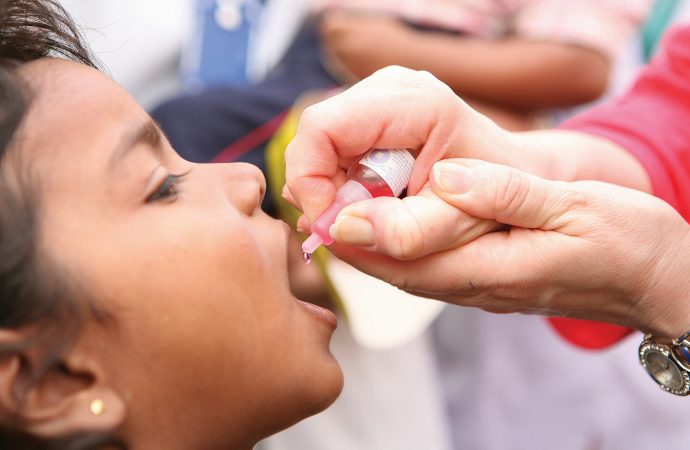What is polio?
Poliomyelitis, or polio, is a deadly infectious disease, caused by the poliovirus. At the turn of the 20th century, polio was a common disease with high mortality rates, with epidemic peaks in the 40s and 50s. The development of the polio vaccine, however, almost completely eradicated the disease by the beginning of the 21st century.
The poliovirus is a small virus that spreads rapidly from person to person. Through contaminated water and faeces, the virus enters the human gastrointestinal tract and, in the intestines, it replicates itself and may enter the spinal cord and brain.
Symptoms
Seventy-two per cent of children infected will not manifest any symptom, though they continue to be an agent of transmission to other children.
Most of the symptoms are related to complications of the gastrointestinal tract, such as vomiting and sore throat. Fever, fatigue and pain are also common symptoms.
When the virus invades the central nervous system, patients experience paralysis of the extremities. Those who manifest these symptoms are at higher risk of mortality, with 5 to 10% ultimately dying due to diaphragm paralysis.
Prevention
The introduction of the Salk vaccine in 1955 and subsequent mass vaccination in the following years was crucial for the decline in the incidence of polio. Today, two types of vaccine exist: the inactivated poliovirus vaccine (IPV) and the oral poliovirus vaccine (OPV).
The vaccine is highly efficient; 99% of the children who receive the recommended doses will be protected from polio.
Key facts
– Polio mainly affects children under 5 years of age.
– About 2 to 10 children out of 100 who have paralysis from polio die.
– Cases die to wild poliovirus have decreased by over 99% since 1988, from an estimated 350 000 cases then, to 22 reported cases in 2017.
– There is no cure for polio, it can only be prevented.
– Today, only 3 countries in the world have never stopped transmission of polio (Pakistan, Afghanistan and Nigeria).
CDC – What is Polio?
Groce, N. E., Banks, L. M., & Stein, M. A. (2014). Surviving polio in a post-polio world. Social Science & Medicine, 107, 171-178. [Open Access Library]
Keugoung, B., Fotsing, R., Criel, B., & Macq, J. (2012). Achieving polio eradication: A need for innovative strategies. [Open Access Library]





